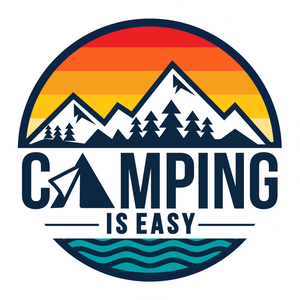So, you've got the itch to hit the trails with everything on your back, huh? I’ve been there, and let me tell you, the backpack you choose is pretty much your best buddy out in the wild.
The Backpack Lowdown:
Let’s talk backpacks. You’ve got three main types to consider. First, there’s the ultralight pack. It's as light as a feather, but don't expect to load it up like a mule; it’s best for those 25-pound-and-under trips. It's perfect for those who can make tough choices on gear - every ounce counts.
The next step up is a pack with a bit more backbone – literally. It’s got some structure, some stays, and a bit of suspension so you can push the weight up to around 30-35 pounds. It's still sleek, but with a bit more oomph for those extra comforts.
Now, for someone just dipping their toes into the backpacking ponds, I’d say go for the 60-liter pack. It’s roomier and has the muscle for 50 pounds or more. Sure, it's not as light as the others, but you can work your way down as you get savvier about what gear is essential.
Prices? They swing from $75 to $500-plus. But here's the deal: try them on with some weight in the store. You want that 'just right' fit.
I'm going to choose the mid-weight pack for this shorter trip. Let's get it filled.
Choosing Your Food:
Hey fellow trail lover,
So, you've got the itch to hit the trails with everything on your back, huh? I’ve been there, and let me tell you, the backpack you choose is pretty much your best buddy out in the wild.
The Backpack Lowdown: Let’s talk backpacks. You’ve got three main types to consider. First, there’s the ultralight pack. It's as light as a feather, but don't expect to load it up like a mule; it’s best for those 25-pound-and-under trips. It's perfect for those who can make tough choices on gear - every ounce counts.
The next step up is a pack with a bit more backbone – literally. It’s got some structure, some stays, and a bit of suspension so you can push the weight up to around 30-35 pounds. It's still sleek, but with a bit more oomph for those extra comforts.
Now, for someone just dipping their toes into the backpacking ponds, I’d say go for the 60-liter pack. It’s roomier and has the muscle for 50 pounds or more. Sure, it's not as light as the others, but you can work your way down as you get savvier about what gear is essential.
Prices? They swing from $75 to $500-plus. But here's the deal: try them on with some weight in the store. You want that 'just right' fit.
For my upcoming short trip, I'm picking the mid-weight pack. Let's load it up!
Chow Time Choices: Now, onto grub. I’m a simple soul when it comes to food out in the backcountry. Give me some ramen, crackers, hydrate-in-the-bag meals, string cheese, oatmeal, and a few snack bars, and I’m golden for about a week.
Pro tip: Squash your food into Ziploc bags to save space and use them for trash later. Squeeze out the air to keep them from puffing up at higher elevations – nobody wants their pack to look like a bag of popcorn.
And yeah, ramen might sound boring now, but after a day of trekking, it’s like a warm hug. Cook it up with some water from a fresh stream, and you’ve got backcountry gold. If you're in bear country, you'll need a bear can to keep your food (and you) safe from curious critters.
Okay. Now that we've got all our food loaded for the trip, it's time to start packing up the pack.
Filling the Body of Your Backpack:
Let's start with the bottom of the pack - the light, bulky stuff goes first. I'm talking about the sleeping bag. Mine's a down sleeping bag, which I keep uncompressed at home to keep it fluffy. I tuck it into a waterproof sack and plop it into my pack.
For the heavy items, like your stove and water filters, they go against the middle of your back. This helps with balance and keeps you comfy. The lightweight gear snuggles in at the bottom, and your mid-weight stuff, like clothes and your first aid kit, can cushion the heavy gear.
Load your med kit, toiletries, and other mid-weight items like food right on top for easy accessibility. You really want to scrutinize everything that goes into your pack. You should be ruthless with your gear choices – utility to weight ratio is incredibly important. If it’s not essential and/or have multiple uses, it stays home. Your back will thank you.
The main body is now filled. The last thing I always put on the top is something that I have just come to love in the backcountry and that is the hiking sandals. I usually put those right on the top and then the main body of my pack is filled.
Miscellaneous Items:
The small items that you need quick access to should be stored in the pack's convenient side pockets and waist belt.
This is stuff that you're going to put in that you want constant access to, things like sunscreen, lip balm, a pocketknife, fire starter or insect repellent.
A backpack's lid is a great place for easy access to your bathroom kit, a headlamp, and a pack cover in case you get caught in the rain and need a quick shelter. Smaller items that you need to grab quickly are perfect for the lid.
That's it. Once we button that down, we make sure everything's nice and strapped on. I've got to say, I do not like when people have things hanging on the outside of the pack. Sandals or water bottles bouncing around. Try to eliminate that. You want to have a nice, clean pack, so it's not snagging on any brush as you're walking by. Believe it or not, the suspension just works better and you have a nice, symmetrical, clean pack with no dead spaces, nothing to catch.
The very last thing is strapping down sleeping pad, or put it inside if its an inflatable pad.
And there you have it. Pack’s ready, boots laced, and the trail’s calling. Let's do this!
Happy Trails.
Explore Our Comprehensive Guide on the Top 25 things to bring while camping with your girlfriend


